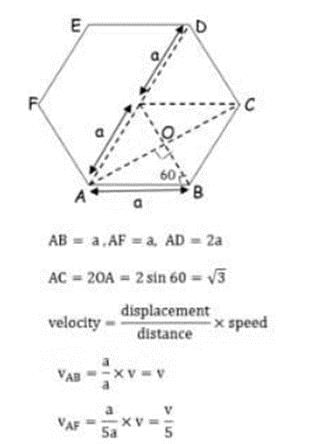Test: Motion in a Straight Line (May 23) - NEET MCQ
12 Questions MCQ Test Daily Test for NEET Preparation - Test: Motion in a Straight Line (May 23)
The displacement x of a particle depend on time t as x = at2 - bt3
A particle has intial velocity 10 m/s. It moves due to constant retarding force along the line of velocity which produces a retardation of 5 m/s2. Then -
| 1 Crore+ students have signed up on EduRev. Have you? Download the App |
A particle initially at rest is subjected to two forces. One is constant, the other is a retarding force proportion at to the particle velocity. In the subsequent motion of the particle
Let v and a denote the velocity and acceleration respectively of a body
The figure shows the velocity (v) of a particle plotted against time (t)
A particle moves with constant speed v along a regular hexagon ABCDEF in the same order. Then the magnitude of the average velocity for its motion from A to -
A projectile of mass 1 kg is projected with a velocity of m/s such that it strikes on the same level as the point of projection at a distance of
m. Which of the following options are incorrect.
The a-t graph of the particle is correctly shown by

The figure shows a velocity-time graph of a particle moving along a straight line
Choose the incorrect statement. The particle comes to rest at
A train covers 60 miles between 2 p.m. and 4 p.m. How fast was it going at 3 p.m.?
The figure shows a velocity-time graph of a particle moving along a straight line
The maximum of displacement of the particle is
|
12 docs|366 tests
|




























